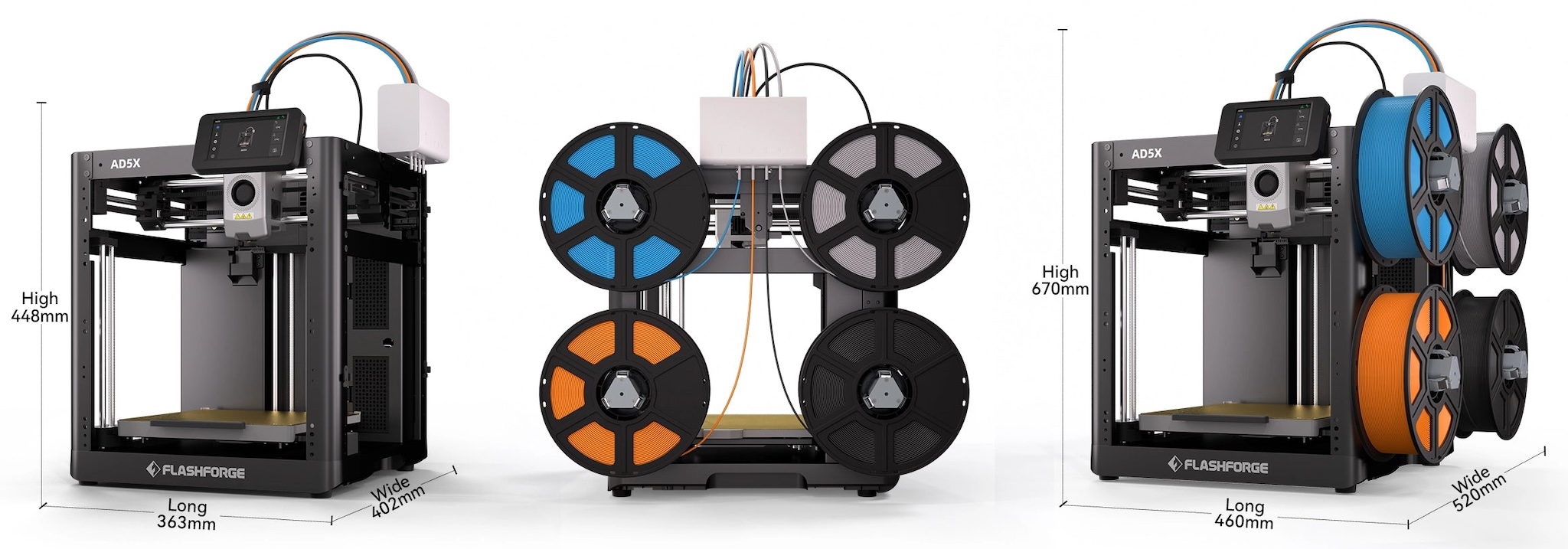The Flashforge AD5X is an open frame CoreXY 3D printer that I’ve found interesting for a few reasons and that I decided to start keeping notes on.

Pluses
- Works with OrcaSlicer (mostly) out of the box
- Price point is very appealing (EUR 375 on Amazon as of this writing)
- Multi-material handling included out of the box, with a simple and straightforward solution
- Quick release nozzle system with useful selection of nozzle sizes available
- Somewhat fits my volume constraints if I finagle the spool placement
- There is a thriving community around it, with a few useful software mods and upgrades available
- Explicitly supports “LAN only” mode and does not require activation through an app (although there isn’t any info on telemetry)
- Has an Ethernet port, which is a plus for my setup
Minuses
- The LCD ribbon cable is exposed to the point where it is easy to tear it off the connector (and brick the machine) by accident.
- Build plate size and volume (220×220×220mm) are a bit on the small side for a CoreXY printer (but Ender 3 plates fit perfectly)
- Comes with yet another semi-hackish OrcaSlicer fork
- Does not come with a hardened steel nozzle and seems targeted at non-abrasive filaments.
- Open frame, with a flimsy enclosure kit that you have to mostly 3D print yourself (+US$64 for acrylic and screws…).
- No camera in the stock configuration (+US$40).
- Proprietary display and semi-proprietary Klipper firmware fork
- External volume and filament spools take up a bit too much space (it would be interesting to see if I could mount them above the printer)
- Flashforge’s track record regarding software is… interesting. The current shipping firmware has hard-coded purge limits that make multi-material printing difficult without firmware hacks (this mod fixes that), but Flashforge seems to be ignoring the issue.
- The spool holder placement is kind of stupid when you consider that the back spools prevent you from getting the printer as close to the wall as possible.
In short, this is an interesting printer to tinker with, but not without its quirks. It might be a fun replacement for my Kingroon KP3S Pro if I can get the software side of things sorted out, but is not going to be a “print anything” machine given its volume and feature limitations.